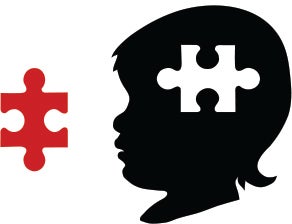
As we close out National Autism Awareness Month, it’s important to discuss exactly what autism is. To begin, you have to understand that “autism” is a broad term describing a host of different brain disorders that cause delays in language development and socialization, just like the term “cancer” describes a host of different diseases, characterized by abnormal cell growth. People with autism can be high IQ college graduates who have difficulty socializing, a group previously lumped under the heading of Asperger’s syndrome, or they may be nonverbal and require constant care like those with a rare disorder in the autism spectrum called Pitt-Hopkins.
While these disorders tend to be diagnosed and treated as separate conditions, we are at the point of unraveling some shared underlying mechanisms that include problems that arise in early development, including involving the placenta. Gene expression in the placenta appears to influence the risk of autism, and also of schizophrenia, a disorder that does not appear until adolescence or early adulthood. Understanding how genes for autism operate during this time of development may lead to a better understanding of the biology of the disorder and eventually, prevention measures.
We’ve come a long way since 1911, when the Swiss psychiatrist Eugen Bleuler first coined the term autism. The term autism comes from the Greek “autos,” meaning “self” and Bleuler thought autism was a way to escape from schizophrenia into a state of self-absorption. The last 10 years have brought an explosion of new research into autism—now called autism spectrum disorder (ASD)—specifically, a neurodevelopmental syndrome that affects about one in 100 people worldwide. Characterized by early dysfunction in socializing and the presence of repetitive behaviors, a decade ago, autism was considered uncommon and only rarely could we trace the cause back to biology. But a growing body of research has shifted our focus, and we now understand that genetics and perturbations in brain development are the main causes of autism, not parenting or childhood vaccinations as previous speculations suggested.
While a fairly rare form of autism, research into Pitt-Hopkins syndrome (PTHS) offers promising discoveries for people with disorders across the spectrum. Pitt-Hopkins happens because of a mutation to a single gene on the 18th chromosome, leading to distinctive facial features and developmental delay—children don’t tend to walk until they are four and most individuals do not speak. Some people also experience difficulties with breathing and digestion, and we currently have no medications to treat this disorder.
When rats are genetically modified to have the Pitt-Hopkins mutation, we find abnormalities in their brain cells that seem to explain the cognitive and social abnormalities we find in people. The mutation causes an ion channel protein on the surface of brain cells to be overly active, changing how the nerve cells function—and ultimately how the brain develops and works. When we use genetic editing to render the channels less active or give the rats drugs that target this ion channel, the brain cells begin to functioning more normally.
Not everything discovered in the lab translates to humans, but we are now looking into some promising drugs to see if this type of therapy can help people with Pitt-Hopkins syndrome. More importantly, unlike many of the other disorders that fall under the autism rubric, we have a good understanding of what causes Pitt-Hopkins. Further research in this area can open a tiny window into the underlying causes and possible cures for other types of autism.
Experts estimate that autism cost the United States $268 billion in 2015 and will climb to $461 billion by 2025. Much of this money goes for providing medical care as well as residential or supported living accommodations. But a big chunk of this cost is a result of loss of income by individuals and their caregivers.
Unfortunately, these breakthroughs in understanding the causes of autism come at the same time that The U.S. Food and Drug Administration is forced to send out an updated alert warning consumers about a host of ineffective and potentially dangerous autism treatments, including raw camel milk, essential oils, and chelation therapy. Because anyone with a computer can hop on the internet and make wild medical claims, the FDA offered this sound advice: “Personal testimonials are no substitute for scientific evidence.”
Focusing on the wrong issue or phony remedies wastes time and money. We must stay focused and continue unraveling the underlying mechanisms that lead to autism so we can provide a path to better treatment and prevention strategies.